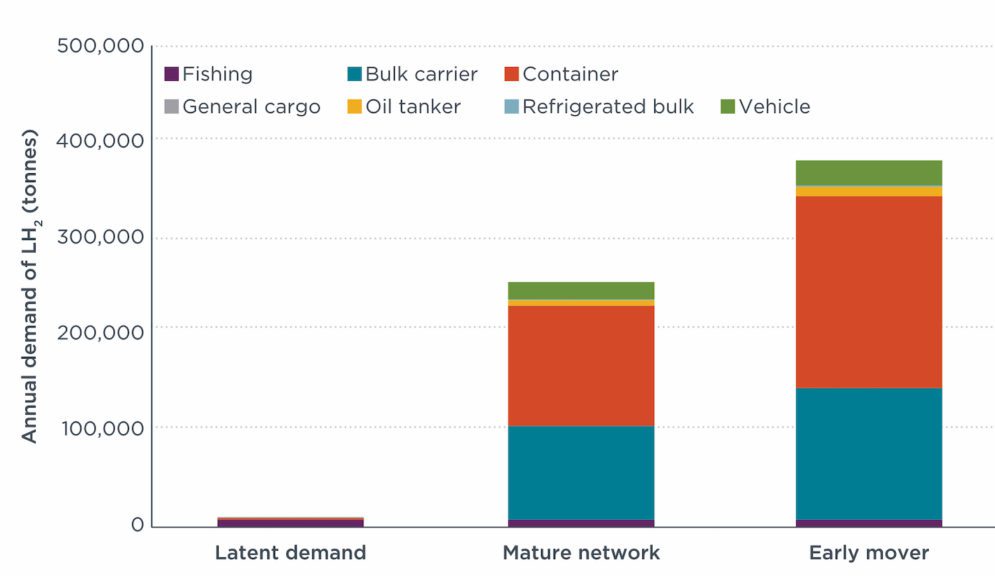Working Paper
Scaling U.S. zero-emission shipping: Potential hydrogen demand at Aleutian Islands ports
For the past few years, ICCT has been investigating the potential for liquid hydrogen (LH2) made from renewable electricity to power transpacific container shipping. Most recently, we estimated that container shipping could generate demand for over 730,000 tonnes of LH2 per year at Pacific ports. This paper builds on that work by considering the role that Aleutian Islands ports in Alaska could play. The authors estimate both “latent demand” from the existing fleet that already calls on the Port of Dutch Harbor, one of the busiest fishing ports in the United States, and demand from oceangoing vessels that would require an additional refueling stop if operated on LH2. This includes developing new methods to characterize the operations and fuel use of fishing vessels, which are poorly represented in existing models.
The results show that hydrogen-powered ships could generate substantial and diversified demand for LH2 at Aleutian Islands ports (see figure below). The latent demand is estimated to be about 10,000 tonnes annually, with a market value of $39 million if 2035 prices are assumed. Most of this is from fishing vessels, and findings suggest that their energy use is about one-quarter higher than previously estimated to meet hydraulic and refrigeration loads. Under a “mature network,” medium-volume scenario where oceangoing vessels divert to Aleutian ports as part of a mature hydrogen network, the study finds greater potential demand of up to 260,000 tonnes, valued at $1 billion. An even larger market of up to $1.6 billion could be captured under a maximum “early mover” case where proactive investments in LH2 bunkering infrastructure are made at Aleutian ports to lock in customers.

Figure. Potential liquid hydrogen demand in the Aleutian Islands by scenario and ship type.
These findings make a strong case for federal funding to help jumpstart hydrogen bunkering at Aleutian ports. The favorable geography, significant latent demand, and untapped renewable energy potential in Alaska make this a unique opportunity for investment. That could take place through federal programs like the $2.25 billion set aside for port infrastructure under the Bipartisan Infrastructure Law passed by Congress in 2021.
